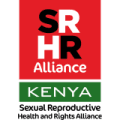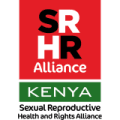According to Census 2009, young people below the age of 25 constitute 66% of the total population in Kenya. Adolescents on the other hand, make up 24% of the country’s total population (9.2 million). Unfortunately, this group experiences some of the poorest reproductive health outcomes in the country. The National AIDS Control Council estimates that 29,000 young people 15-24 years of age get infected with HIV every year while, 17% of all AIDS related deaths occur among adolescents and young people. Unsafe abortions remains the leading cause of maternal mortality and morbidity especially among girls below 20 years. Despite these poor health outcomes the health care delivery system acts as a barrier in limiting young people’s access to SRHR services with only 12% of the current SRHR services labelled as “youth friendly”. This years’ theme for the World Health Day; Universal Health Coverage for All gives prominence to access to quality and affordable health care for all members of society without discrimination.
President Uhuru launched the big four Agenda in 2018 with Universal Health Coverage (UHC) being one of his key development pillars. Currently,Kenya ranks position 140 out of 190 in the World Health Organization’s ranking of the World’s Health Systems. The difference between Kenya and other countries is inadequate health financing. This has greatly affected other components such as human resources, essential medical products and technologies and ultimately, service delivery. In addition, access to highest attainable standards of health is a constitutional right under Article 43 (1) (a) and therefore Kenyans have a right to question their elected leaders on their failure on health facilitation. The health care system in Kenya has not been the best, for example Kenya is nowhere near 50% minimum staffing standards, there is a shortage of essential medical products in our public facilities, and most patients visiting county hospitals are forced to buy drugs from private chemists as medicines are out of stock most of the time etc. UHC aims to increase access to health care services and to reduce the financial burden for all Kenyans.
The Kenyan Government plans to work with County Governments to scale up provision of specialized medical equipment, increase the number of health facilities at the community level and improve healthcare commodities. This is expected to improve SRHR among young people, women and marginalized groups in Kenya. Recently, Kisumu County, was selected for piloting of the UHC, after which it will be implemented in the rest of the Counties. However, there is still a lack of clarity and consensus in the country on what actions and outcomes will constitute its success. Therefore, the government should increase health financing to at least 10 per cent both at the National and County levels to ensure that human resources for health staffing norms and standards are met and that essential commodities for health including reproductive health commodities are available and easily accessible.
Given the strong and growing political support for UHC across the continent, this is a critical time for young people to carve out their role in setting the agenda globally, regionally and locally. Thus, their input and efforts in achieving UHC should be given priority.
BY JUDY NYAMVULA AMINA
Youth Country Coordinator Kenya SRHR-Alliance


